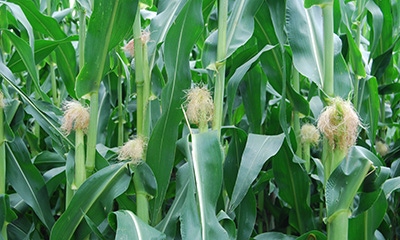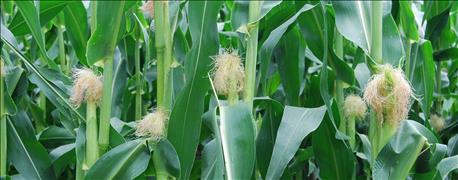
Iowa State University field agronomists around the state reported seeing Japanese beetle feeding injury in some corn and soybean fields this past week. “Japanese beetles have a wide host range that includes many species of fruit and vegetable crops, ornamentals and field crops,” says Erin Hodgson, ISU Extension entomologist.
“The adult beetles prefer to feed between soybean leaf veins but can ultimately consume most of the leaf,” she explains. “They are easy to spot because of their size and metallic color, and are usually found along field borders. They are also very mobile and like to hang out in big groups. So when you see one, you usually see 10 more.”

SILK CLIPPING: In corn, Japanese beetle does most of its damage when it clips silks during pollination. It can chew on corn leaves, but most people tend to overestimate injury caused by leaf feeding. Treatment threshold in soybeans is 30% defoliation before bloom, 20% after bloom.
When to consider applying insecticide on corn, soybeans
Treatment threshold for Japanese beetle in soybeans is 30% defoliation before bloom and 20% defoliation after bloom. “Most people tend to overestimate plant defoliation,” says Hodgson, “but this reference can help you make more accurate estimations. In corn, Japanese beetles can feed on leaves, but the most significant injury comes from clipping silks during pollination.”
Hodgson says to consider applying a foliar insecticide during corn tasseling and silking if: 1) there are 3 or more beetles per ear; 2) silks have been clipped to less than one-half inch, AND pollination is less than 50% complete.
Don’t overestimate corn defoliation; watch for silk clipping
“Crops are still looking good across my area of central Iowa,” says Mark Johnson, ISU Extension agronomist. “I have noticed some Japanese Beetles feeding on trees and to a lesser degree in soybean fields.”
“In corn, while Japanese beetles can feed on the leaves, what you really need to watch for is clipping of silks during pollination,” says Johnson. He cites ISU’s recommendation that you should consider applying a foliar insecticide during tasseling and silking if there are 3 or more beetles per ear, silks have been clipped to less than one-half inch, and pollination is less than 50% complete. “Most corn is now over 50% pollinated,” he notes.
Most beans are now blooming, so use the 20% threshold
What about soybeans? “Most beans are now in bloom, so use the 20% threshold for soybean defoliation if you are trying to decide whether or not to spray insecticide on soybeans to kill Japanese beetles,” says Johnson.
Corn is now in the R3 reproductive stage of growth in central Iowa–with some fields approaching R4 reproductive stage, he notes. R3 is the “milk stage” meaning kernels have a milky interior; the outside is yellow. R4 is “dough stage,” as the inside consistency of kernels is similar to dough.
Keep watching soybean fields for signs of insect pests
This year’s soybean crop in most of central Iowa is now in the R3 reproductive stage of growth—with some fields approaching the R4 reproductive stage, says Johnson. R3 is “beginning pod,” as the pods are three-sixteenths of an inch long at one of the uppermost nodes on the main stem with a fully developed leaf. The R4 stage is “full pod,” and the pods are three-fourths of an inch long at one of the 4 uppermost nodes on the main stem with a fully developed leaf.
What about other insect pests? Besides Japanese beetle, what else should you look for in soybean fields now? “I’ve noticed some bean leaf beetles feeding in some fields,” says Johnson. “And soybean aphids are continuing to be at very low levels when found in Iowa so far this year.” Brian Lang, ISU Extension agronomist in northeast Iowa, reports finding soybean aphid infestations in some fields that have now reached 96% of the field, but infestation levels in those fields are averaging only 30 aphids per plant.
About the Author(s)
You May Also Like




